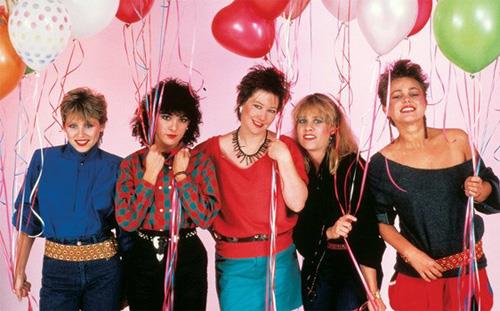
The Go-Go's set out to show that an all-female band could do all the things an all-male band could do, and they pretty much succeeded.
That included making catchy records that became big hits. It included becoming famous. It also included serious internal friction, propelled at different times by money and acute substance abuse issues. Then it ended with a ragged divorce.
The Go-Go's, a two-hour Allison Ellwood documentary that premieres Friday at 9 p.m. ET on Showtime, takes a fast-paced tour through the history of the band, start to finish.
It's an almost breathless ride, narrated by all the members of the band's best-known incarnation – Belinda Carlisle, Jane Wiedlin, Charlotte Caffey, Kathy Valentine, and Gina Schock – as well as the two original members who got replaced along the way, drummer Elissa Bello and bass player Margot Olavarria.
So fans who followed them from their actual beginning, not from their 1981 fame explosion on MTV, can get that part of the backstory, as well.
The Go-Go's focuses on the band becoming the first all-female group to write their own music, play their own instruments, and have their debut album go to Number 1.
That's not inconsequential. But they also became one of many rock bands of all genders that could not sustain their initial success.
Their first big single, "We Got the Beat," went to No. 2 on the charts. The follow-up, "Vacation," went to No. 8, then "Head Over Heels" went to No. 11, and for radio success, that was pretty much it.
The second album also didn't match the first, for the most traditional of reasons. Their success created overwhelming pressure to produce a second album before there was enough good material for it.
The Go-Go's also arrived at the same time as MTV, a double-edged sword for countless bands. The exposure created great buzz. It also created burnout, becoming a kind of conveyor belt on which the next big things were constantly rolling in.
Success also brought other problems. The group members who wrote songs, like Caffey, made more money than those who didn't. Some members, notably Caffey again, plunged into drugs and separated from what had been the family of the band.
Much of The Go-Go's dissects this disintegration, which is frustrating to watch. Happily, it also chronicles the better days, and that's a pretty good story as well.
Everyone except Caffey initially came to the band from a burning desire to become part of the late-'70s punk band movement. Caffey, who had classical piano training, was instantly seduced by that exotic world, and the band spent its first couple of years playing punk music – badly at first, which was fine, and then gradually better.
When Caffey wrote "We Got The Beat," she almost didn't show it to the others because it was really a pop song, much more in the old girl-group tradition. But the others loved it, and the vintage clips show how, almost overnight, the punk band became something else.
Something much more saleable, which was not unpleasant. But popularity came at a price, proving that in that sense, at least, the notoriously sexist music biz is gender-blind.
Maybe that's progress.